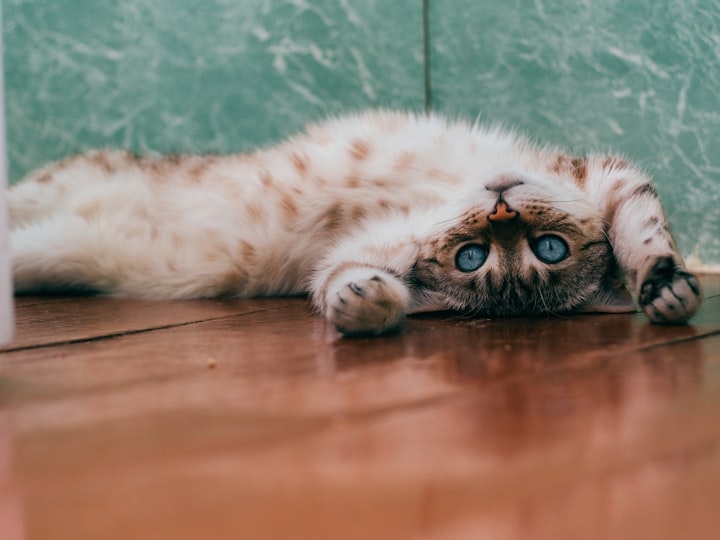5 Silent Killers Of Cats
Common Silent Diseases That Harm Your Cat

There are some straightforward recommendations for taking care of your cat:
- Maintain a secure environment (keep him indoors)
- Give a high-quality diet (e.g., a meat-based protein)
- Consider preventive measures (e.g., an annual physical examination, laboratory tests, and the appropriate vaccines)
- Provide lots of of love and exercises.
You can help keep your four-legged, feline friends healthy for years by using these simple tips. However, you should also be aware of five feline "silent" killers, as cat guardians.
You can check for clinical signs by becoming aware of the most prevalent silent killers. Veterinarians can treat most of these disorders as soon as the clinical symptoms are identified.
1. Chronic kidney disease

Chronic kidney disease (CKD) is one of the leading causes of silent cat death (This is sometimes called chronic renal failure or chronic kidney injury).
All of these words have the same semantic meaning, which effectively indicates that 75% of both kidneys are useless and not functioning.
CRD's clinical symptoms include:
- Excessive water intake
- Excessive urination
- Larger clumps in the litter box
- Weight loss
- Bad breath (due to toxins building up in the blood and causing ulcers in the mouth, esophagus, and stomach)
- Lethargy
- Hiding
- Fortunately, cats can tolerate CKD for years with the right care (unlike dogs where CKD usually progresses more rapidly).
A low-protein diet, routine blood tests, increased water consumption, medicines, and even subcutaneous fluid administration are all possible methods of managing chronic conditions (which many pet guardians do at home, once properly trained).
2. Hyperthyroidism

Hyperthyroidism occurs when the thyroid gland overproduces the thyroid hormone.This occurs in middle-aged to elderly cats and can causes symptoms that are very similar to those of chronic renal disease, such as:
- Extreme thirst
- Increased water intake/Urination
- Vomiting/diarrhea
- Weight loss
But because hyperthyroidism speeds up cats' metabolisms, it has one telltale symptom: a ravenous appetite despite weight reduction.
It may also lead to:
- A pounding heartbeat
- Significant hypertension (resulting in acute blood loss, neurologic signs, or even a clot or stroke)
- Secondary organ damage (e.g., a heart murmur or changes to the kidney)
3. Diabetes Mellitus

Diabetes Mellitus (DM) is another costly silent killer that affects cats .Our cats are more prone to develop diabetes since they are frequently overweight or obese.
Diabetes is characterised by either insulin resistance (Type I DM) or insufficient insulin secretion from the pancreas (Type II DM). The natural hormone insulin transports blood glucose, or sugar, into the cells.
The body produces more and more glucose as a result of the cells' starvation for it, which results in hyperglycemia (high blood sugar) and many of the clinical symptoms associated with DM.
The following are examples of common clinical signs for DM, which are similar to those for chronic renal disease and hyperthyroidism:
- Excessive thirst and urination
- Larger clumps in the litter box
- Being overweight or obese and muscle wasting (especially over the spine or back) or weight loss
- A diminished or insatiable hunger
- Weakness or sluggishness
- Vomiting
- Unusual breathing (e.g., acetone breath)
- Walking strangely (e.g., lower to the ground)
Treatment for DM is expensive, as it requires twice-a-day insulin injections that you have to give under the skin. In addition, periodic blood glucose testing, nutrition adjustments (to a high protein, low carbohydrate diet), and veterinary visits are necessary.
Cats can survive with supportive care and long-term maintenance; but, once diabetes complications (such as diabetic ketoacidosis, hyperosmolar, and hyperglycemic syndrome) appear, they can be life-threatening.
4. Cardiac Diseases

Both cat owners and vets find heart illness to be highly frustrating.This is due to the fact that, unlike dogs, cats frequently lack a heart murmur, which is a loud heart murmur that can be detected with a stethoscope and is suggestive of cardiac disease.
Actually, it's thought that 50% of cats with heart illness don't have an audible heart murmur.
Heart disease's clinical symptoms include:
- Cardiac murmur
- An abnormal heartbeat
- Collapse
- Falling out (e.g., syncope)
- Trouble breathing
- Blue- tinged gums
- Sudden , acute paralysis (e.g., typically of the hind limbs)
- Sudden lameness and death
After a physical examination, chest radiographs, the Cardiopet® proBNP Test, and a "echocardiogram" are used to detect cardiac disease, treatment options may include emergency oxygen therapy, diuretics, blood pressure support, and heart medicines.
Since heart medicine just slows the progression of cardiac disease rather than curing it, the long-term outlook is dismal.The exception is cardiac illness brought on by hyperthyroidism, which frequently improves after treatment for the condition!
5. Cancer

Increased cancer cases are observed by veterinarians as dogs and cats live longer. Cats most frequently develop gastrointestinal cancer, which is frequently brought on by lymphosarcoma.
Cancer's clinical symptoms include:
- Weight loss
- Avoiding food
- Vomiting
- Diarrhea
- Having trouble breathing
- Bloating
- Weakness
- Lethargy
- Fever
- General bad health
Cancer has a terrible prognosis once it has been identified.
Therefore, the earlier diagnosis and therapy are started, the better. Clinical symptoms should be noticed as soon as possible.
Bottom Line
Make sure you are aware of these typical silent killers when it comes to your cat's health. The sooner the issue is identified, the sooner it can be resolved!
About the Creator
Aisha Shamim
I am Aisha Shamim: A Teacher, Researcher, and Writer. Most of my articles are about fitness and pets, i also write about science.
If you like my work leave a like and don't forget to subscribe!






Comments
There are no comments for this story
Be the first to respond and start the conversation.